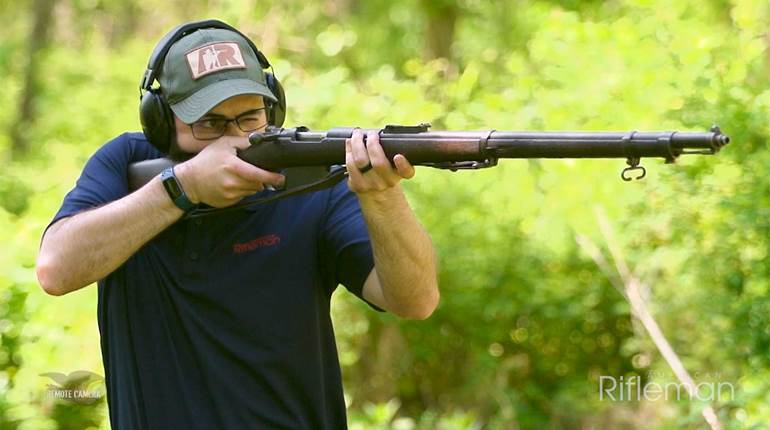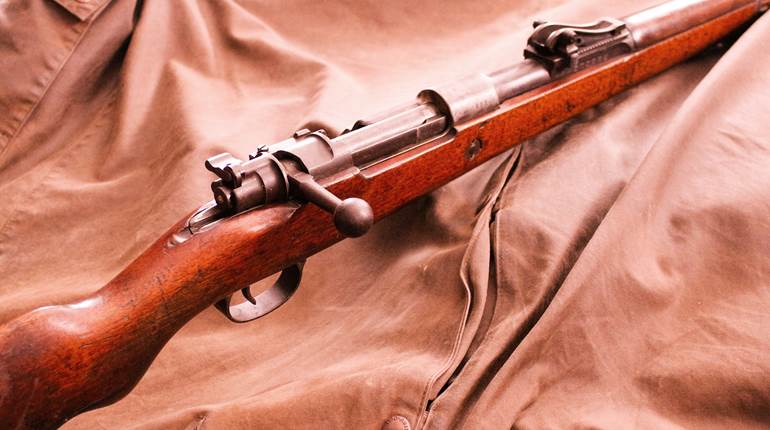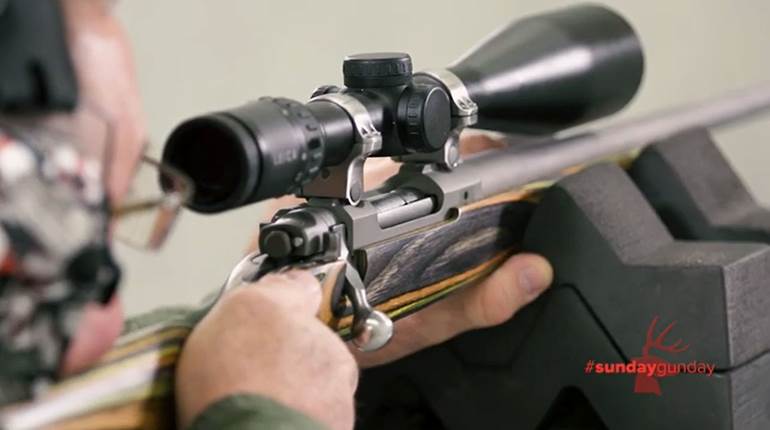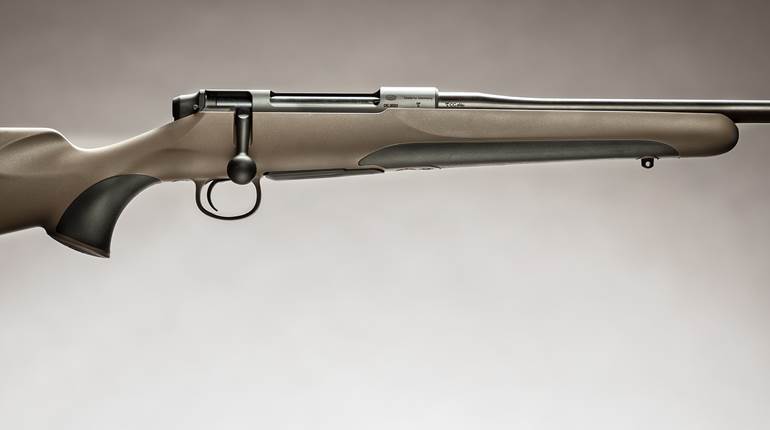
Origins
Belgium began pursuing the concept of adopting a repeating rifle in the early 1880s. By 1887, the quest had led to international trials, which continued through 1889. Both domestic as well as international contenders were vying for military contracts including Pieper, Nagant and Mannlicher, among others. Mauser was a late entry in 1888.
The rifle requirements were developed through a process of lengthy trials and included, most notably, the box magazine that could be loaded by stripper clip or by individual rounds, the barrel jacket, and the smokeless small caliber 7.65 mm cartridge. The Mauser design was ultimately adopted by majority vote. Trials were conducted with 7.65x53 mm rimmed cartridges. Although the caliber and its ballistics had been selected, the debate continued about “rimmed” versus “rimless” cartridges. The rimless case was ultimately selected.
Before the model was adopted, several reputable arms manufacturers joined forces in order to effectively supply the Belgian government. These armsmakers, many of which competed in the trials with their own designs, formed the corporation Fabrique Nationale d’Armes de Guerre (FN or "National War Weapons Factory"). Although the trials had not been concluded and the rifle model had not been selected, the armsmakers agreed to produce and sell the future rifle of choice at a fixed price of 79 francs.
Paul Mauser agreed to have the rifles produced in Belgium and sold the manufacturing license to the Belgian government. The government gave FN the license while retaining the rights to manufacture the model in state arsenals. The task of producing the contract was immense: buildings had to be erected, a workforce had to be hired and equipment had to be purchased. No expense was spared and only the most modern machinery was acquired. Factory construction was still ongoing when rifle production began, and the first rifles were completed on Dec. 31, 1891. The Model 1889 Mauser rifle effectively gave birth to the arms giant Fabrique Nationale.
It did not take long for the Belgian army to request a shorter version, which led to the standard Model 1889 carbine. The standard carbine was received with mixed reviews by the various military branches. Many branches opted to have their own versions made. That led to several models, most based on the standard Model 1889 carbine. The Belgian military adopted the rifle in 1889, but the Belgian Garde Civique (civil guard) waited until 1895 to conduct its own trials. Ultimately the Model 1889 was selected, and compatibility with army rifles was obviously a key consideration.
FN was the sole manufacturer of the Model 1889 rifle in the 19th century. Belgian state arsenals started making parts in order to repair guns. By 1913 this led to the assembly of complete rifles. FN grew through the years and added numerous product lines, but the Model 1889 rifle was never changed and its only customers were the Belgian army and the Belgian Congo.
The Belgian Congo adopted the rifle for its Force Publique (Public/Police Force) in 1910. However, only 40 percent of the Force Publique’s native soldiers were issued the Model 1889 rifles. Constant mutinies in the ranks of the Force Publique created distrust with the officers who were concerned with having repeater rifles in the hands of native soldiers.
At the outbreak of war in 1914, the Belgian military was completely equipped with Model 1889 rifles and carbines. The Garde Civique was mostly using the Model 1889 rifle, although some outdated Comblain Model 1882 single-shot rifles were still in use.
The Great Impediment
When thinking of the Great War, we often envision the stagnant conditions of trench warfare; but before the stalemate was the German race to capture Paris. When tensions rose, the Germans enacted the 1905 Schlieffen plan in order to capture the French city. For Germany to succeed, France needed to be defeated in six weeks. The overconfident German military did not recognize the shortcomings of its plan, after all, there was not much in the way. Neutral Belgium would certainly not resist, so it reasoned.
The first hurdle manifested itself when the Belgian government refused to give the German army free passage to France. Germany responded by invading Luxembourg and Belgium on August 4, 1914, confident that the Belgian army would be swept aside, causing no delays. After the Franco-Prussian war, Belgium had built a network of strategically positioned fortifications, and forts were built around many cities. The city of Liège was surrounded by 12 forts—a defensive network the Germans had to cross. 
There, the German first wave of 35,000 men was met with stiff resistance. Liège and its forts were defended by the Belgian 3rd Division. Belgian foot soldiers were armed with Model 1889 rifles while fortress personnel were armed with Model 1889 artillery fortress carbines. The Germans massed on the eastern bank of the Meuse River, and attempts to cross the river resulted in heavy fighting. The Germans quickly became aware of the excellent marksmanship of the Belgian riflemen. This turned to frustration as Belgian rifleman employed multiple tactics that often allowed them to remain unseen while firing. Combat spilled into the city's streets and suburbs, including into Herstal where FN's facilities are located. Belgian soldiers were fighting within sight of the plant where their rifles were manufactured.
The superior marksmanship of the Belgian soldiers was a result of pre-war competitions. Tireurs d’Elite (sharpshooters) were not a select few, but could be any soldier who succeeded in competition. Pre-war competitions extended to various marksmanship challenges including hitting the target at 500 meters. The Belgian army did not have any dedicated snipers, nor did it utilize telescopic sights.
The Germans eventually realized that the Liège forts could not be captured by infantry, so heavy artillery was brought in to destroy them. Many of the fortress soldiers endured bombardments, and some even fought the Germans in the tunnels of the forts with their Model 89 carbines.
The Germans had planned to take Liège in three days, but it required 11! The Belgian 3rd Division retreated, and combat spread throughout the countryside. Belgian operations were a blend of traditional military strategy and guerrilla tactics. Riflemen performed hit-and-run operations, a necessity as Belgian soldiers were frequently outnumbered five-to-one by their German counterparts. 
The delays and constant harassment caused frustration within the German command. Reprisals were brutal, towns and villages were burned, and civilians were executed. The brutality inflicted on quiet little towns such as Visé, Tamines, Aarschot and Dinant became world news. The reprisals had the opposite effect from what the Germans had hoped. The atrocities became a battle cry for the Belgians, and an international scandal. While the army fought and retreated, young men were signing up everywhere. News reports made the world aware of the brutality of the new war. Charities worldwide worked relentlessly to supply Belgium with food, arms and ammunition. Herbert Hoover, who would become our 31st president, was the most successful organizer of relief aid and effectively kept the Belgian population from starving throughout the war.
After Liège, the Germans shelled the forts of Mons. Low on supplies, the Belgian field army retreated toward the city of Antwerp, a huge arms depot with ammunition, Mauser rifles and spare parts. Antwerp and its fortifications gave the Belgian field army the opportunity to re-arm. The fighting retreat continued westward toward the coast where the Belgians would defend a patch of land for the remainder of the war.
Although the Schlieffen plan greatly underestimated Belgian resolve, it was accurate in assessing Allied response—the French and British were slow to deploy troops toward the front. Belgian delays made it possible for the Allies to amass just enough troops to win the critical battle of the Marne. The correlation between the Belgian rifleman and the salvation of Paris is now long forgotten. In the day, though, the French recognized that the delays saved their capital from invasion. The defense of Liège was frequently praised, and France awarded medals and recognition to the city of Liège and its defenders.
Allied Manufacture
Shortages were critical during the war. Dissatisfied with available French designs, Belgian purchasing commissions started working in November 1914 to manufacture Mausers abroad. The Belgians found a willing manufacturer in Hopkins & Allen and signed a contract on August 4, 1915, for the manufacture of 140,000 Model 1889 rifles and 10,000 Model 89/16 carbines. Hopkins & Allen greatly underestimated the demand and cost of materials and labor in time of war and underbid the contract. This ultimately led to its bankruptcy. The rifles were paid for by the Belgian government unlike what is often reported. The first Hopkins & Allen rifles were completed in October 1916, but most did not arrive at Belgian arsenals until 1918! These were mostly issued with Belgian occupation troops in the Rhineland in the 1920s. These Mausers are easily identified by the “Hopkins and Allen Arms Co. Norwich, Conn. U.S.A.” marking on the receiver.
The bulk of wartime replacements came from Birmingham, England, where the Belgian government set up a complete arsenal to manufacture and repair Belgian Mausers. Carbines and rifles were marked “Birmingham Etat Belge” (Birmingham – Belgian State). This marking has led some collectors to incorrectly believe that the rifles were built by the British government. The arsenal was in fact a Belgian government facility, employing Belgian refugees, most from the Liège region with backgrounds in armsmaking.

The receiver markings indicate the manufacturers: Fabrique Nationale, Manufacture d’Armes de l’Etat (the pre-war Belgian State Arsenal), Hopkins & Allen or the Belgian arsenal in Birmingham. While the receiver indicates the manufacturer, the stock cartouche indicates if the rifle was used by the Belgian army, the civil guard, or the Force Publique in the Congo. Some buttplates are marked with regimental markings.
Before any new carbines were manufactured, the Belgian wartime arsenal in Calais streamlined the many variances into one model. Known as the Model 89/16, it replaced all pre-war variants, and existing carbines were converted during the war to the new Model 89/16 specifications. Pre-war Model 1889 bayonets were converted as well—the quillion was removed as it proved to be cumbersome in barbed wire.
The Germans recognized the quality of the Model 1889, though. Many captured rifles and carbines were issued to German troops after being converted to 8 mm Mauser. Although operational, the German conversions lacked precision.
After the war, there was an abundance of Model 1889 Mausers, and Belgium no longer placed orders for the Model 1889 with FN. In 1936, a conversion program began to modify some 1889 Mausers to the modernized Model 89/36 rifle, but relatively few were completed. Both the Model 1889 rifle and 89/16 carbine remained in service through May 1940 when the Belgians were once again faced with a German invasion.
Select Sources:
Allied Rifle Contracts in America, by Luke Mercaldo
Breaking the Fortress Line 1914, by Clayton Donnell
FN Mauser Rifles,Arming Belgium and the World, by Anthony Vanderlinden





































